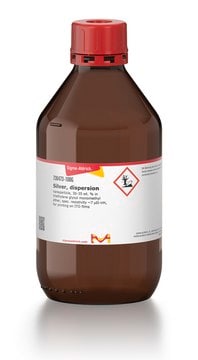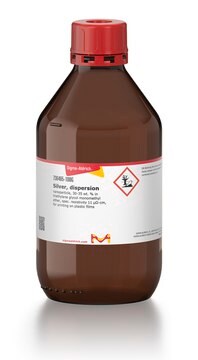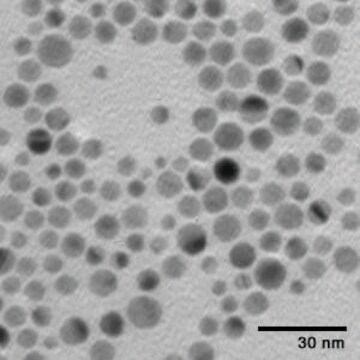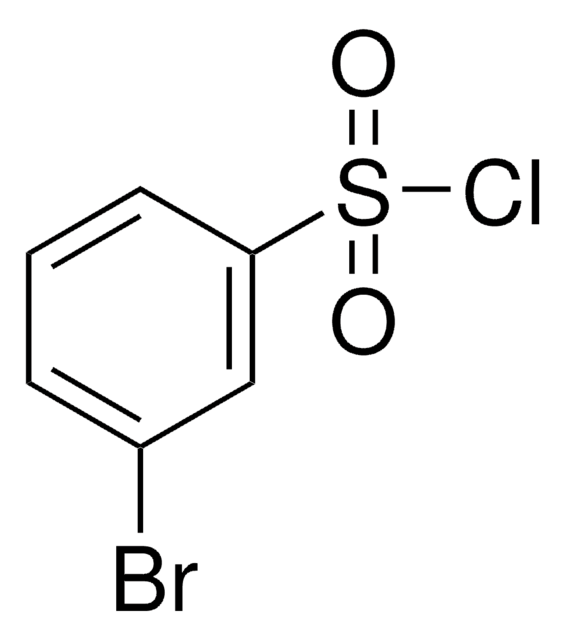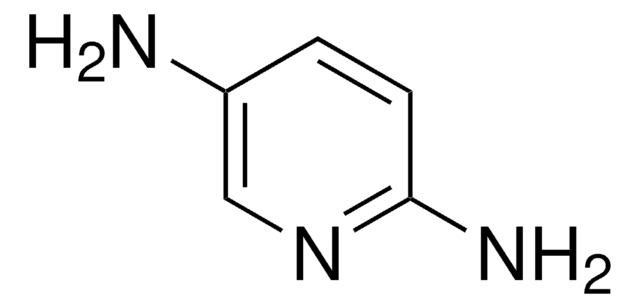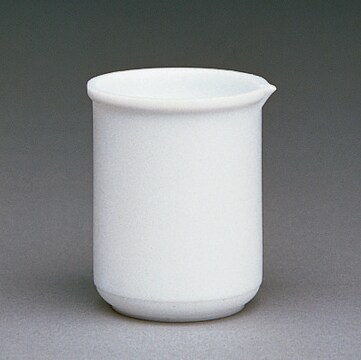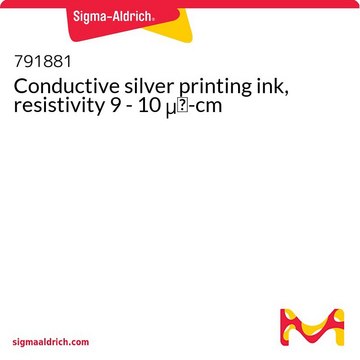736481
Silver, dispersion
nanoparticle, ≤50 nm particle size, 30-35 wt. % in triethylene glycol monoethyl ether, spec. resistivity ~ 2 μΩ-cm, for printing on ITO and glass
Synonym(s):
Silverjet DGP-45HTG, silver ink
About This Item
Recommended Products
description
surface tension 30 - 50 dyn/cm
form
nanoparticle
concentration
30-35 wt. % in triethylene glycol monoethyl ether
refractive index
n20/D 1.333
particle size
≤50 nm
viscosity
10-18 cP
density
1.45 g/mL±0.05 g/mL at 25 °C
storage temp.
2-8°C
SMILES string
[Ag]
InChI
1S/Ag
InChI key
BQCADISMDOOEFD-UHFFFAOYSA-N
Looking for similar products? Visit Product Comparison Guide
General description
Curing Temperature: Above 400 °C
Recommended substrates: ITO, Glass, Etc.
Recommended washing solvent: Polar Solvents: Ethyl Alcohol, IPA etc.
Legal Information
Signal Word
Warning
Hazard Statements
Precautionary Statements
Hazard Classifications
Aquatic Acute 1 - Aquatic Chronic 1
Storage Class Code
10 - Combustible liquids
WGK
WGK 3
Flash Point(F)
230.0 °F
Flash Point(C)
110 °C
Choose from one of the most recent versions:
Already Own This Product?
Find documentation for the products that you have recently purchased in the Document Library.
Customers Also Viewed
Articles
In the past decade, the family of digital printing technologies has evolved from being just a tool to visualize information into a generator of functionalities.
The ability to pattern conductive electrodes is technologically relevant for several applications, including photovolatics, displays, sensors, and biomedical devices.
The emerging field of printed electronics requires a suite of functional materials for applications including flexible and large-area displays, radio frequency identification tags, portable energy harvesting and storage, biomedical and environmental sensor arrays,5,6 and logic circuits.
Recent progress in the area of solution-processed functional materials has led to the development of a variety of thin-film optoelectronic devices with significant promise in the industrial and consumer electronics fields.
Our team of scientists has experience in all areas of research including Life Science, Material Science, Chemical Synthesis, Chromatography, Analytical and many others.
Contact Technical Service